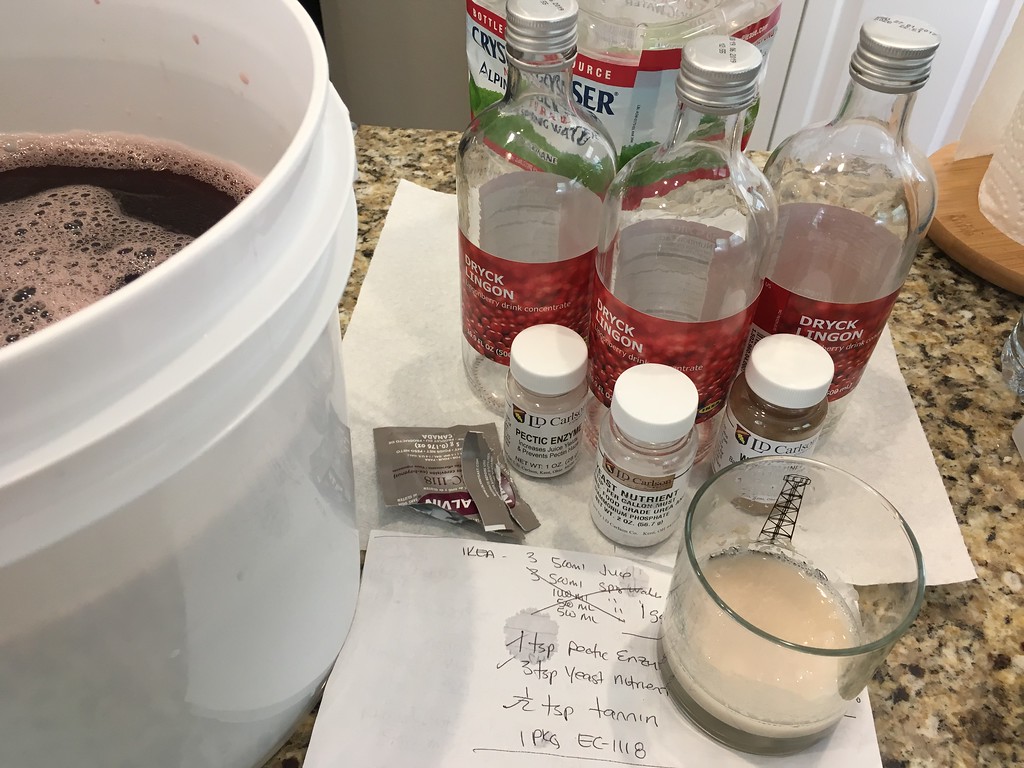- Joined
- Jan 19, 2018
- Messages
- 314
- Reaction score
- 76
Inspired by sgx2's thread here, I just had to give this a whirl today armed with his instructions and a little bit of knowledge I've learned in such a short time. I have no real expectations for the final product as it just seemed like a fun experiment and a bit of 'cool' factor. That's how I look at it.
Basics include:
3/500ml bottles of IKEA Lingonberry concentrate
1gal Spring Water (that's what it took to get to SG1.087)
1tsp Pectic Enzyme
3tsp Yeast Nutrient
1/2tsp Tannin
1pkg EC-1118
Starting numbers:
SG 1.087
pH 2.7
Acid .60%
I'm going in - wish me luck!

Basics include:
3/500ml bottles of IKEA Lingonberry concentrate
1gal Spring Water (that's what it took to get to SG1.087)
1tsp Pectic Enzyme
3tsp Yeast Nutrient
1/2tsp Tannin
1pkg EC-1118
Starting numbers:
SG 1.087
pH 2.7
Acid .60%
I'm going in - wish me luck!






